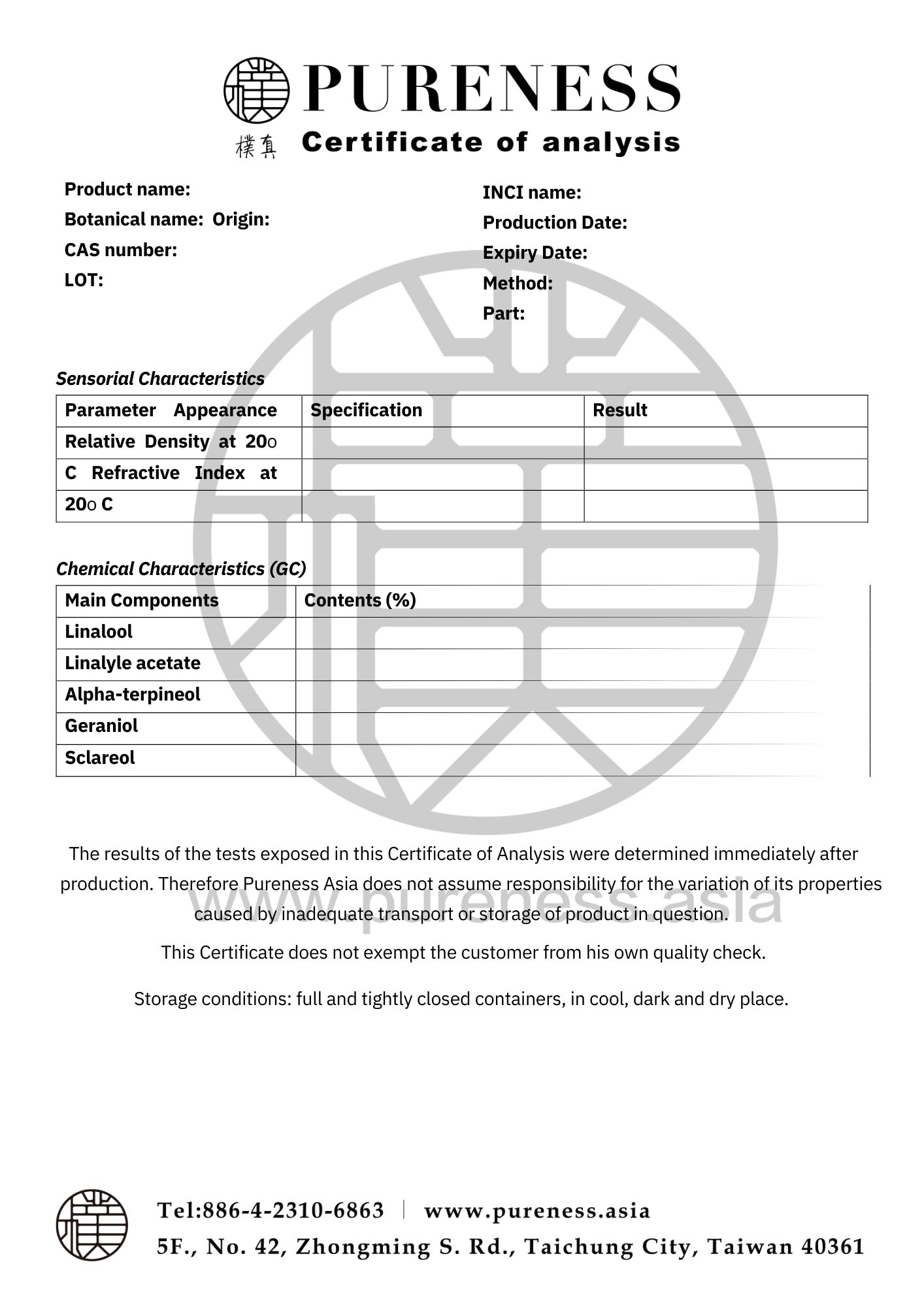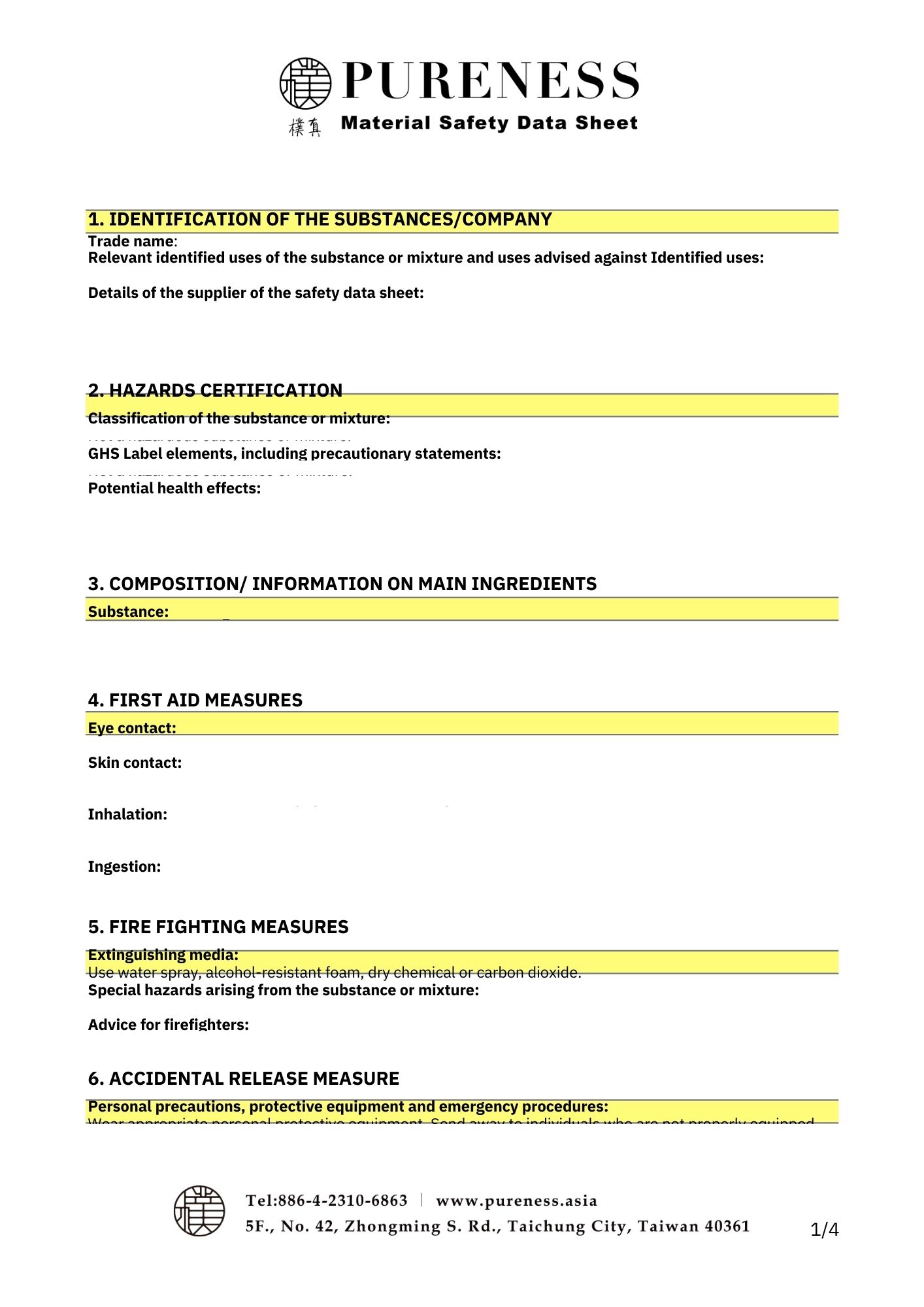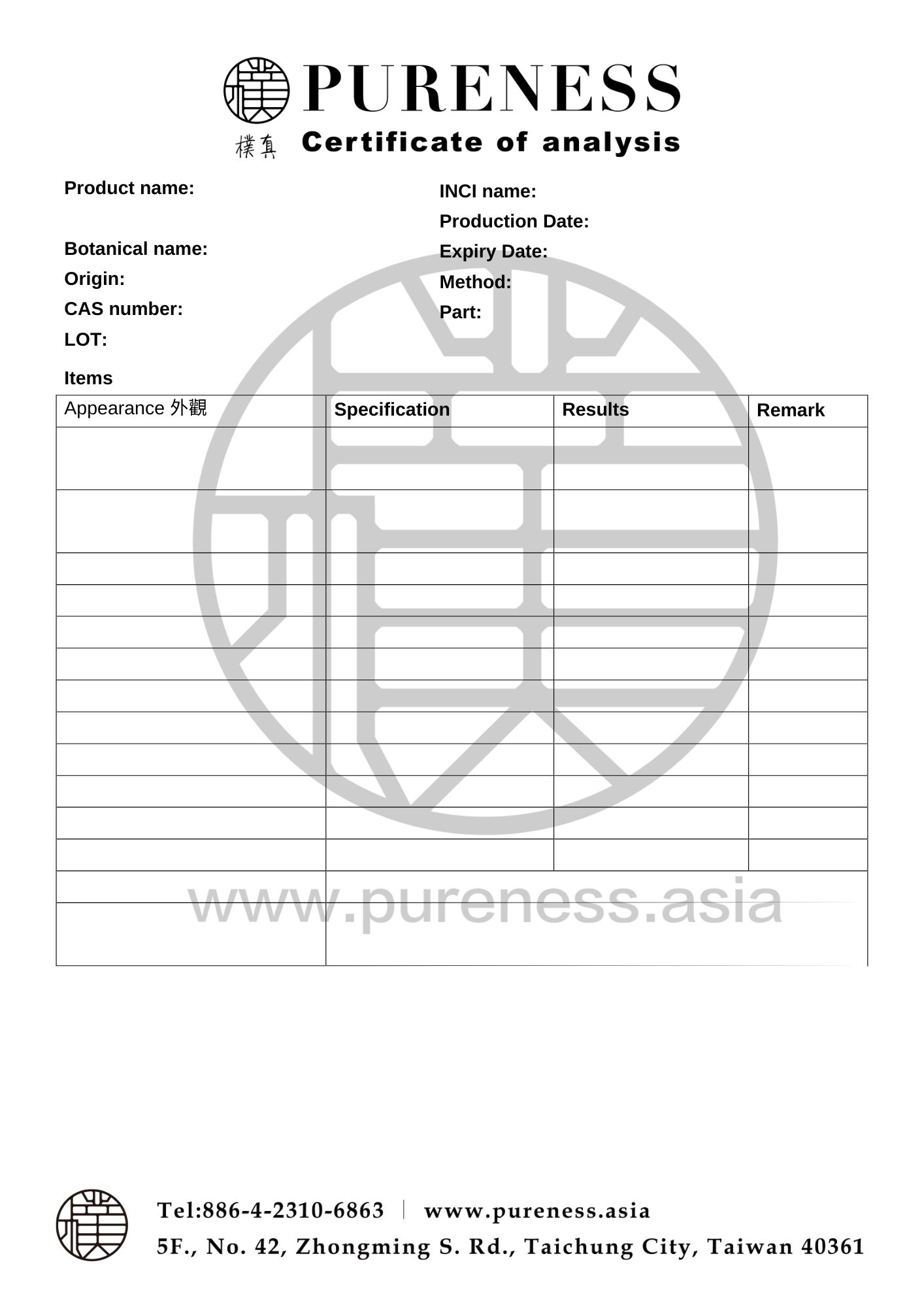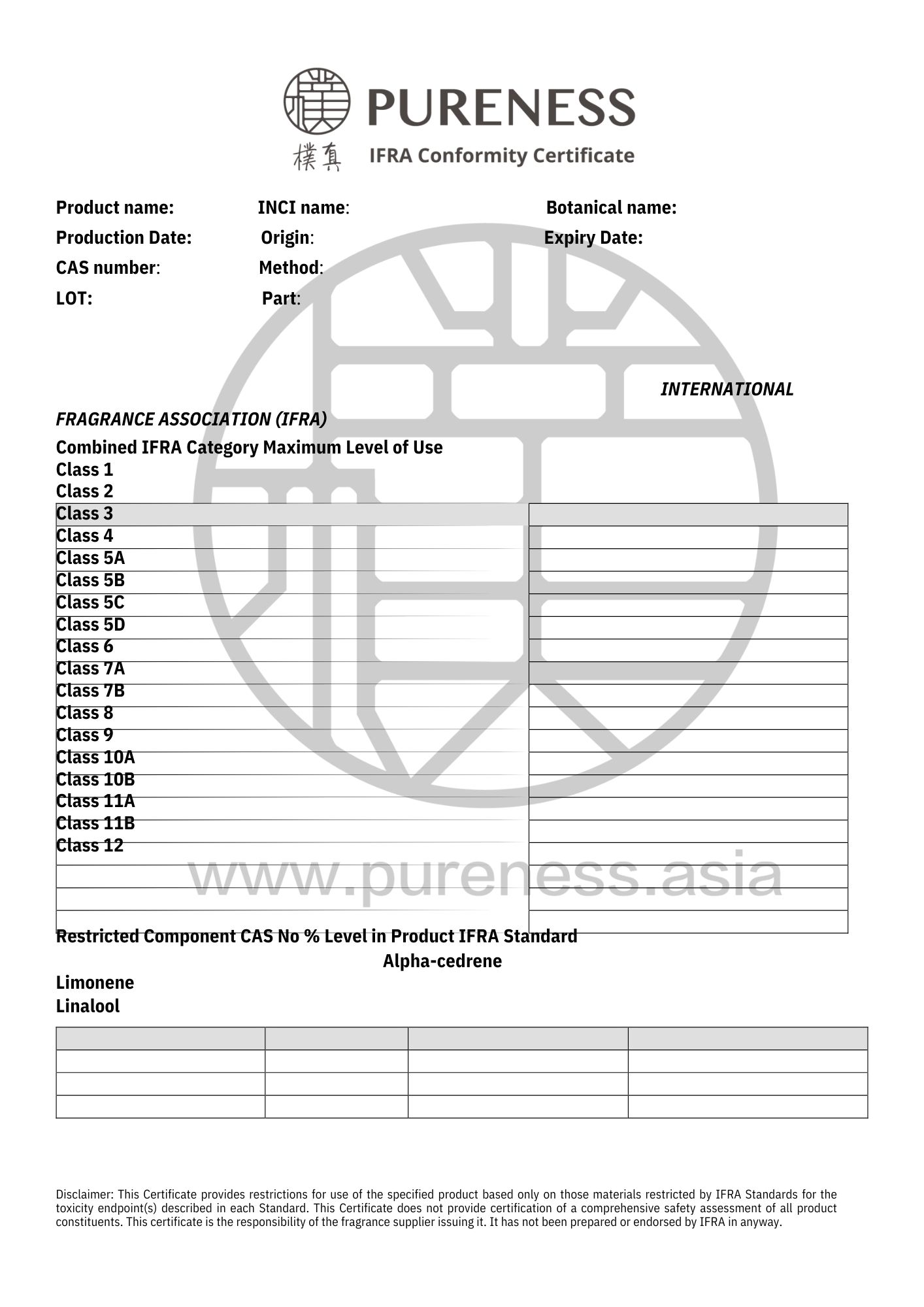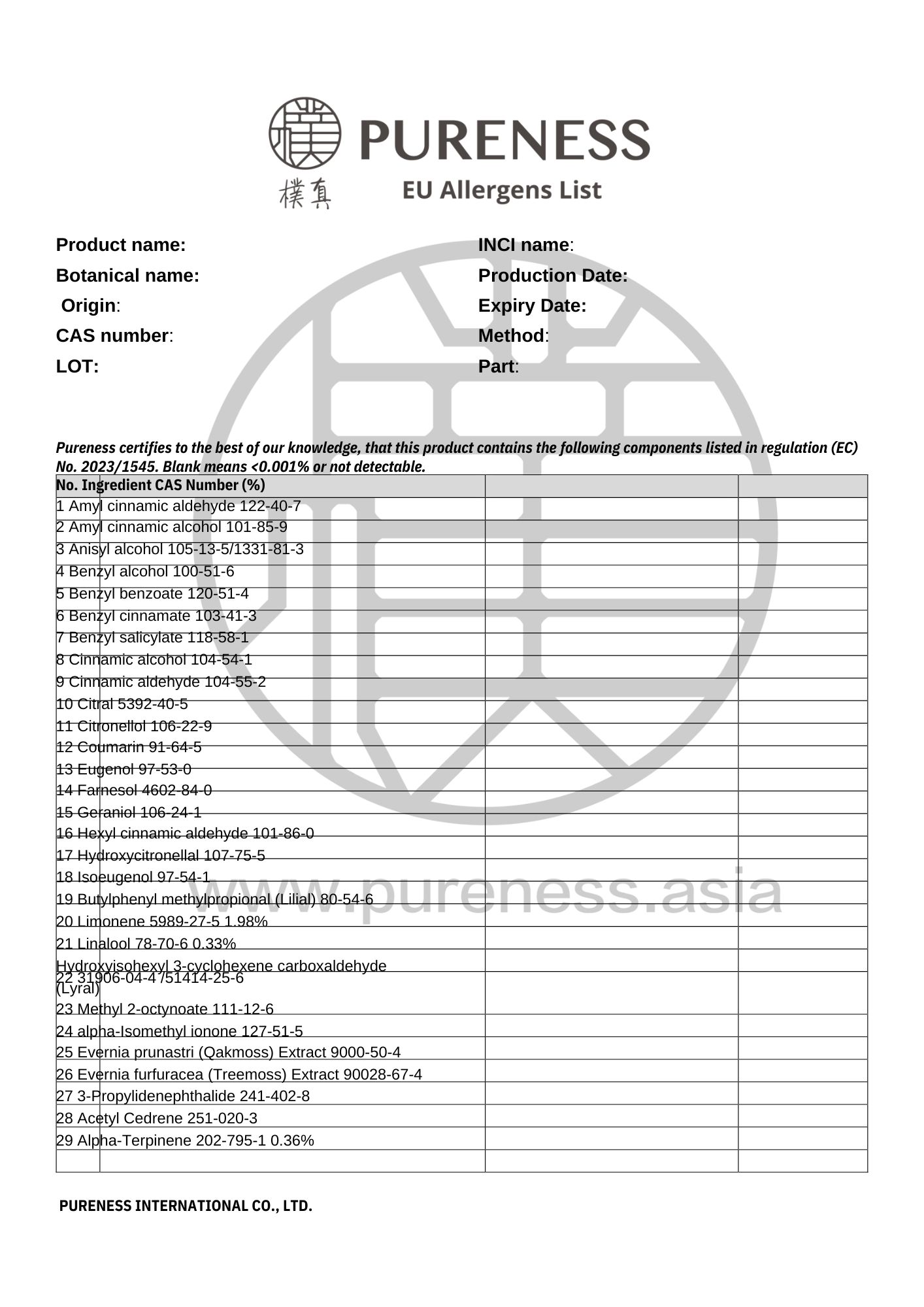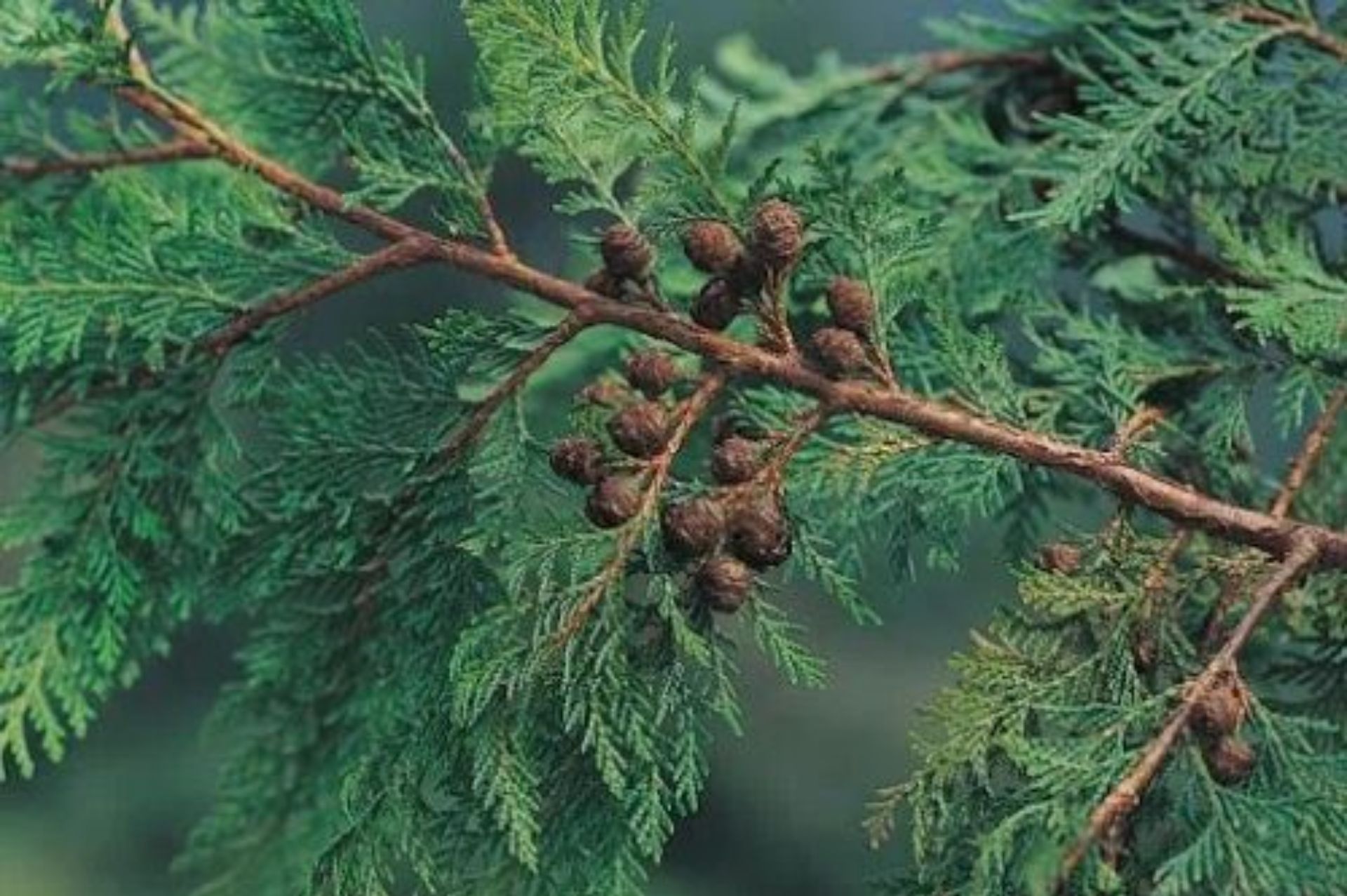
Taiwan Benihi (Hinoki)
Scientific name|Chamaecyparis formosensis
Origin|Taiwan
Classification|Wood series
Specifications|500g-25kg Please contact sales for details
Extraction part|Wood
Extraction method | Cryogenic distillation
Plant family|Cupressaceae (Chamaecyparis)
Aroma|Woody, with refreshing wood resin aroma
▎Essential Oil Introduction
Hinoki (cypress) mainly grows in mountainous areas with an altitude of 1,500 to 2,500 meters. These Hinoki trees settled in Taiwan during the glacial period. Taiwan provides an excellent latitude for growth and geographical environment, it has nurtured a superior Hinoki ecology and quality, and also allowed such precious wood to be preserved.
The first discovered specimens of Hinoki were transported to Tokyo and officially named in 1901 as Taiwan Benihi. Taiwan Benihi is closely related to the Japanese Hinoki (Chamaecyparis pisifera) and both originally had extensive forests, which have significantly diminished over time due to excessive logging, making them highly valuable.
Taiwan Benihi is a unique species found in Taiwan. Its bark is smooth and thin, and the wood has no spicy scent, making it commonly used in high-end construction and furniture materials.
▎Component Analysis
|Main Component:Sesquiterpenols
Taiwan Benihi has a particularly high content of Hinokitiol, and its natural hinokitiol fragrance can relieve nervousness and stress. At present, there are fewer and fewer Taiwan Benihi trees in the world. The Hinokitiol secreted by the tree can protect itself from insects and diseases, so it can survive for more than a thousand years, and it has become a sacred tree.
Taiwan Benihi essential oil extracted from the branches is mainly Sesquiterpenols, while the essential oil extracted from the needle-like leaves is mainly monoterpenes. There are also other ingredients, such as: myrtenol, myrtenyl, g-cadiene, terpene, camphorene, p-cymene, and terpineol, camphor, etc.
|Component:Hinokitiol
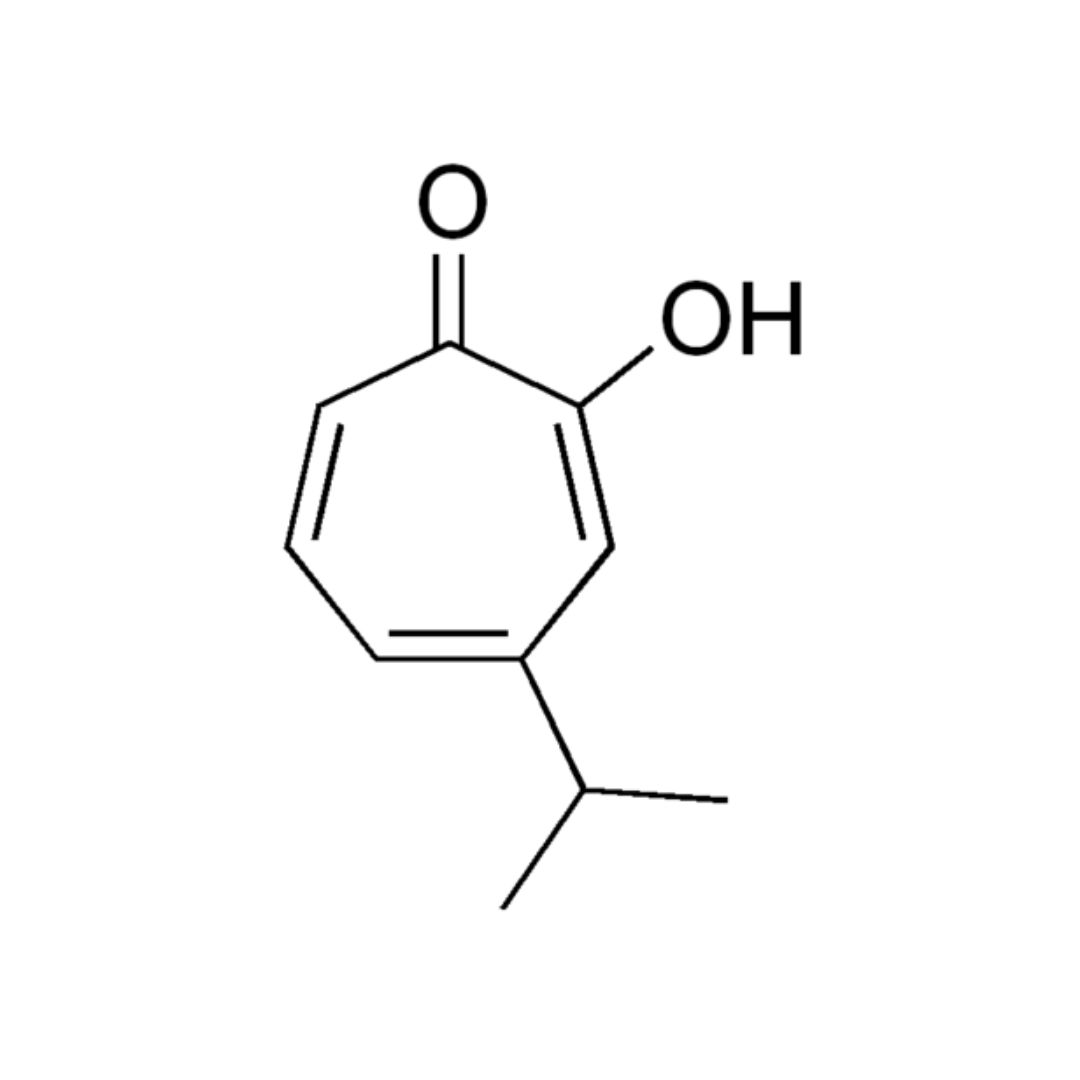
▸ Taiwan Benihi has a high content of Hinokitiol.
|Research Validation
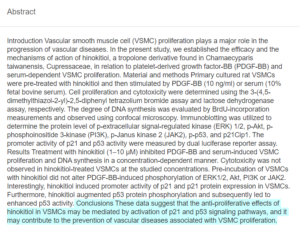
▸ Studies show the association of hinokitiol in vascular smooth muscle cells (VSMC).
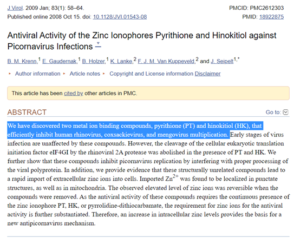
▸ Recent studies have shown that Hinokitiol is effective against a variety of human viruses, including rhinovirus, coxsackievirus and mangovirus, when used in combination with zinc compounds.
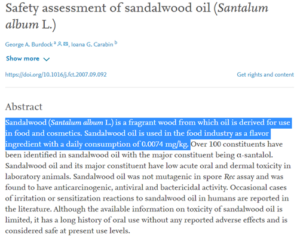
▸ Its components are currently widely used in medicines, cosmetics, edibles, etc. in Germany, Japan, the United States and other countries.
|Raw Material Certifications
To obtain relevant certification information, please contact us on WhatsApp.
▎References
- Chedgy R(2010). Secondary metabolites of Western red cedar (Thuja plicata): their biotechnological applications and role in conferring natural durability. LAPLambert Academic Publishing. ISBN 978-3-8383-4661-8.
- Secretariat,Treasury Board of Canada; Secretariat, Treasury Board of Canada. "Detailedcategorization results of the Domestic Substances List - Open Government Portal". open.canada.ca. Retrieved 2020-06-17.
- Grillo AS, SantaMaria AM, Kafina MD, Cioffi AG, Huston NC, Han M, et al. (May 2017). "Restorediron transport by a small molecule promotes absorption and hemoglobinization inanimals". Science. 356 (6338): 608 –616.
- Service RF (May2017). "Iron Man molecule restores balance tocells". Science Magazine. AAAS. Retrieved 2020-05-20.
5. Mechanism of the Inhibitory Effect of Hinokitiol on Rat Vascular Smooth Muscle Cell Proliferation Dissertation, Taipei Medical University Institute of Medical Sciences; 2010 (2010 / 01 / 01), P1 – 81 - Mechanism of the Inhibitory Effect of Hinokitiol on Rat Vascular Smooth Muscle Cell Proliferation Dissertation, Taipei Medical University Institute of Medical Sciences; 2010 (2010 / 01 / 01), P1 – 81
- Inhibitory effect of PDGF-BB and serum-stimulated responses in vascular smooth muscle cell proliferation by hinokitiol via up-regulation of p21 and p53. April 2018 Archives of Medical Science 14(3):579-587
- IP Australia: AusPat". Australian Government - Intellectual Property Australia. Retrieved 2020-05-20
- Shih YH, Chang KW, Hsia SM, Yu CC, Fuh LJ, Chi TY, Shieh TM (June 2013). "In vitroantimicrobial and anticancer potential of hinokitiol against oral pathogens and oral cancer cell lines". Microbiological Research. 168 (5 ): 254–62.
- Morita Y, SakagamiY, Okabe T, Ohe T, Inamori Y, Ishida N (September 2007). "The mechanism of the bacterial activity of hinokitiol". Biocontrol Science. 12 (3):101–10
10.Wang TH, Hsia SM, WuCH, Ko SY, Chen MY, Shih YH, et al. (2016-09-28). "Evaluation of the Antibacterial Potential of Liquid and Vapor Phase Phenolic Essential Oil Compounds against Oral Microorganisms". PloS One . 11 (9): e0163147. - Jayakumar T, Liu CH, Wu GY, Lee TY, Manubolu M, Hsieh CY, et al. (March 2018). "Hinokitiol Inhibits Migration of A549 Lung Cancer Cells via Suppression of MMPs and Induction of Antioxidant Enzymes and Apoptosis". International Journal of Molecular Sciences. 19 (4).
- Krenn BM, GaudernakE, Holzer B, Lanke K, Van Kuppeveld FJ, Seipelt J (January 2009). "Antiviral activity of the zinc ionophores pyrithione and hinokitiola against picornavirus infections". Journal of Virology. 83 (1): 58–64 .
|Some images sourced from the internet. Contact for copyright removal|
